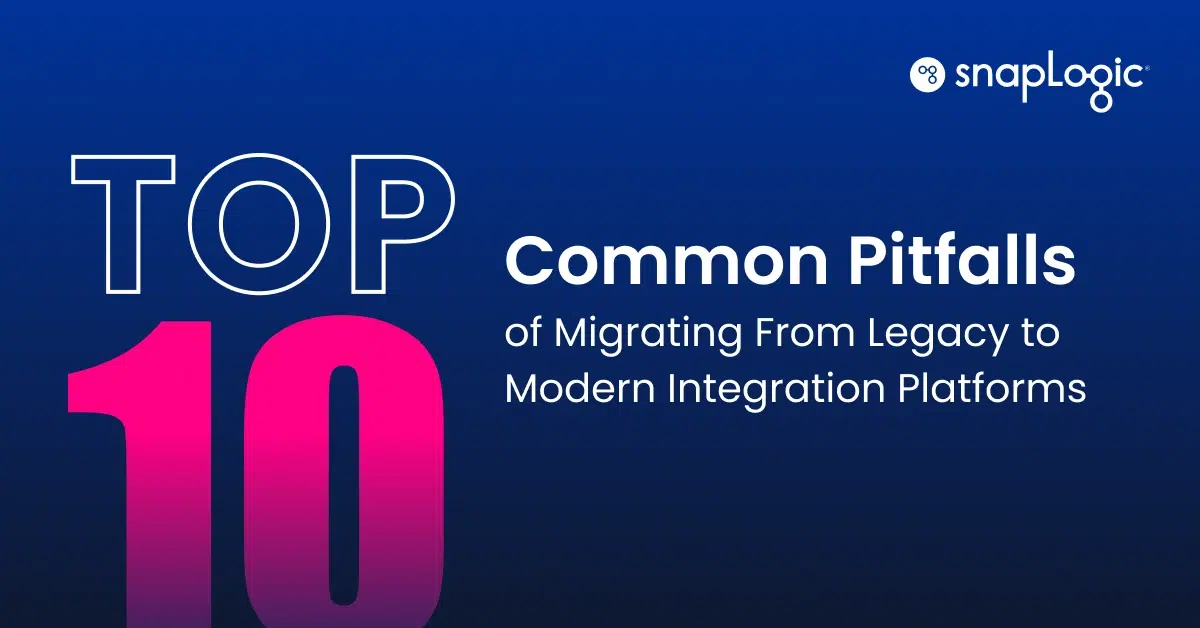SnapLogic’s Vice President of Engineering Vaikom Krishnan recently outlined the 10 New Requirements for Modern Data Integration. Here is a presentation that summarizes the requirements for a successful data integration strategy.
You can read the full article here or the summary below. You can also request a to learn more about our unified, self-service enterprise iPaaS solution and how it can contribute to your data integration strategy.
The 10 new requirements are as follows:
- Application integration is done primarily through REST and SOAP services.
- Software applications are increasingly using SOAP/REST APIs for data and metadata management, unlike SaaS applications. To be effective, modern data integration platforms must provide easy ways to consumer REST and SOAP.
- Large-volume data integration is available to a Hadoop-based data lake or to cloud-based data warehouses.
- Organizations have been moving away from data warehouse and to data lakes to hold large amounts of data. Cloud data warehouse technologies are also growing in popularity due to their low-cost and low-administration capabilities.
- Integration has to support the continuum of data velocities starting from batch all the way to continuous streams.
- Modern integration platforms should be ale to provide the necessary velocity regardless of the size of the data. The engine should be able to stream large data just as well as it can consume and deliver responses like when adding a new product or customer.
- Integration is event-based rather than clock-driven
- The platform should respond to business events in real-time, not after the fact. This could prevent a lost customer upset to delayed service and inefficient business processes.
- The Data Integration Strategy is primarily document-centric.
- Integration that is based on SOAP/REST APIs send and receive hierarchical documents. Transforming these documents to row sets or compressed payloads, like older integration companies do, is the biggest impediment of data integration tooling.
- Integration is hybrid and spans cloud-cloud and cloud-ground scenario.
- We are currently transitioning between ground and cloud software. In today’s hybrid, multi-cloud environment, data integration strategies must include technologies that are able to handle both ground and cloud applications with the same efficiency and use. Be sure to write these into your integration requirements document.
- Integration itself has to be accessible through SOAP/REST APIs.
- Integration has to interoperate with other services in the enterprise, such as monitoring, provisioning, and security.
- Integration is all about connectivity, connectivity, connectivity.
- A little different from location, location, location, but essentially connection is the most important aspect of an integration platform. It must be able to effectively connected disparate systems with its own API set. A set of pre-connectors would speed up the implementation and agility in integration scenarios.
- Integration has to be elastic.
- Integration must be able to operate in real-time, and the demands vary depending on day-to-day business events. Therefore, the integration framework has to be able to scale up and scale down resources on demand.
- Integration has to be delivered as a service.
- Data access and integration technology have to be delivered as a service that’s accessible to anyone who needs them. A new class of users – called “Citizen Integrators” – has made self-service essential, and only a SaaS-based approach can meet the broad spectrum of users and requirements.
To learn more about data integration strategies & APIs, consider attending CLOUD-CON’s webinar featuring our own VP of Marketing, Darren Cunningham happening Thursday, June 23rd at 10 am PT/1pm ET. You can also view the recorded video on our video page or SnapLogic YouTube channel.









